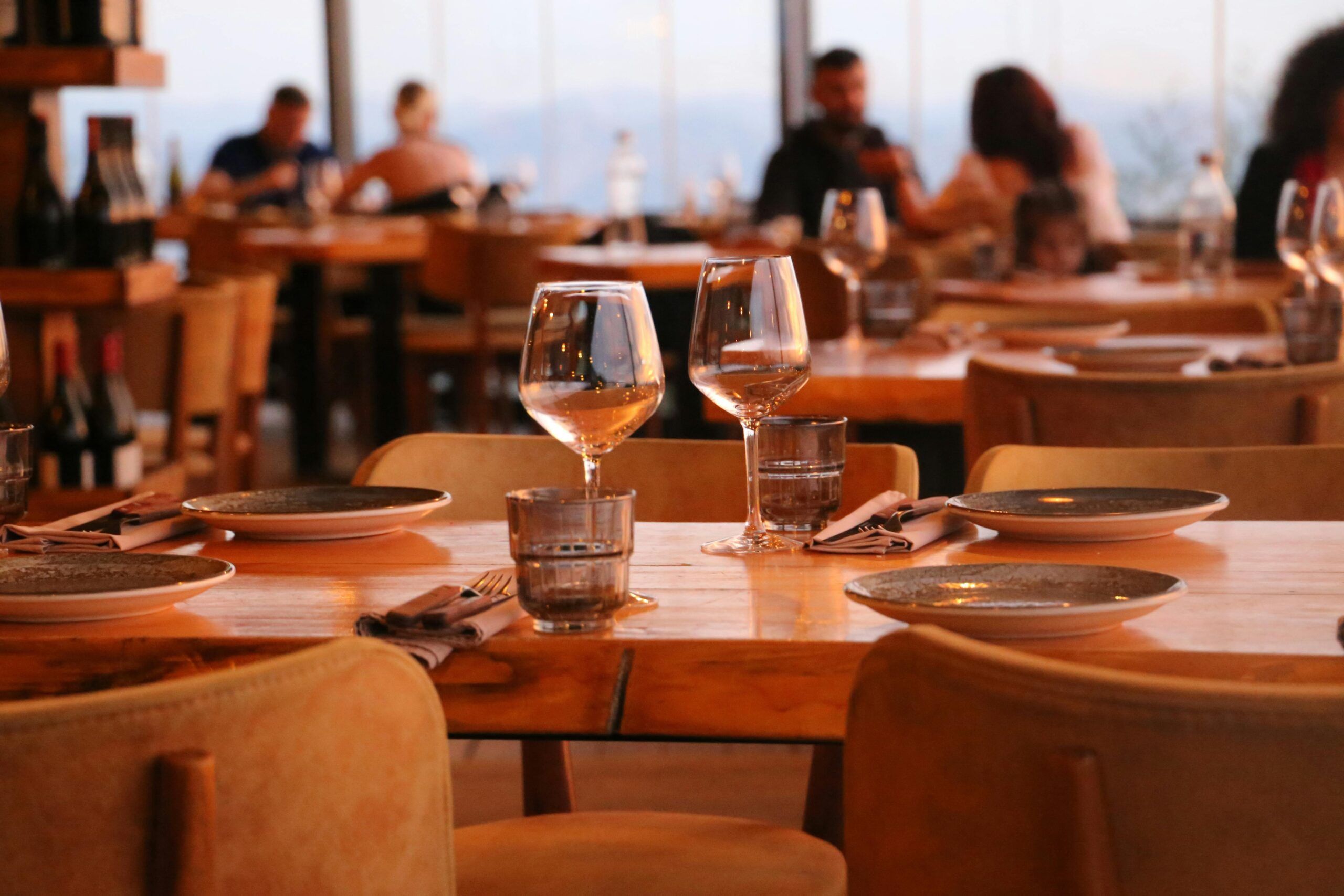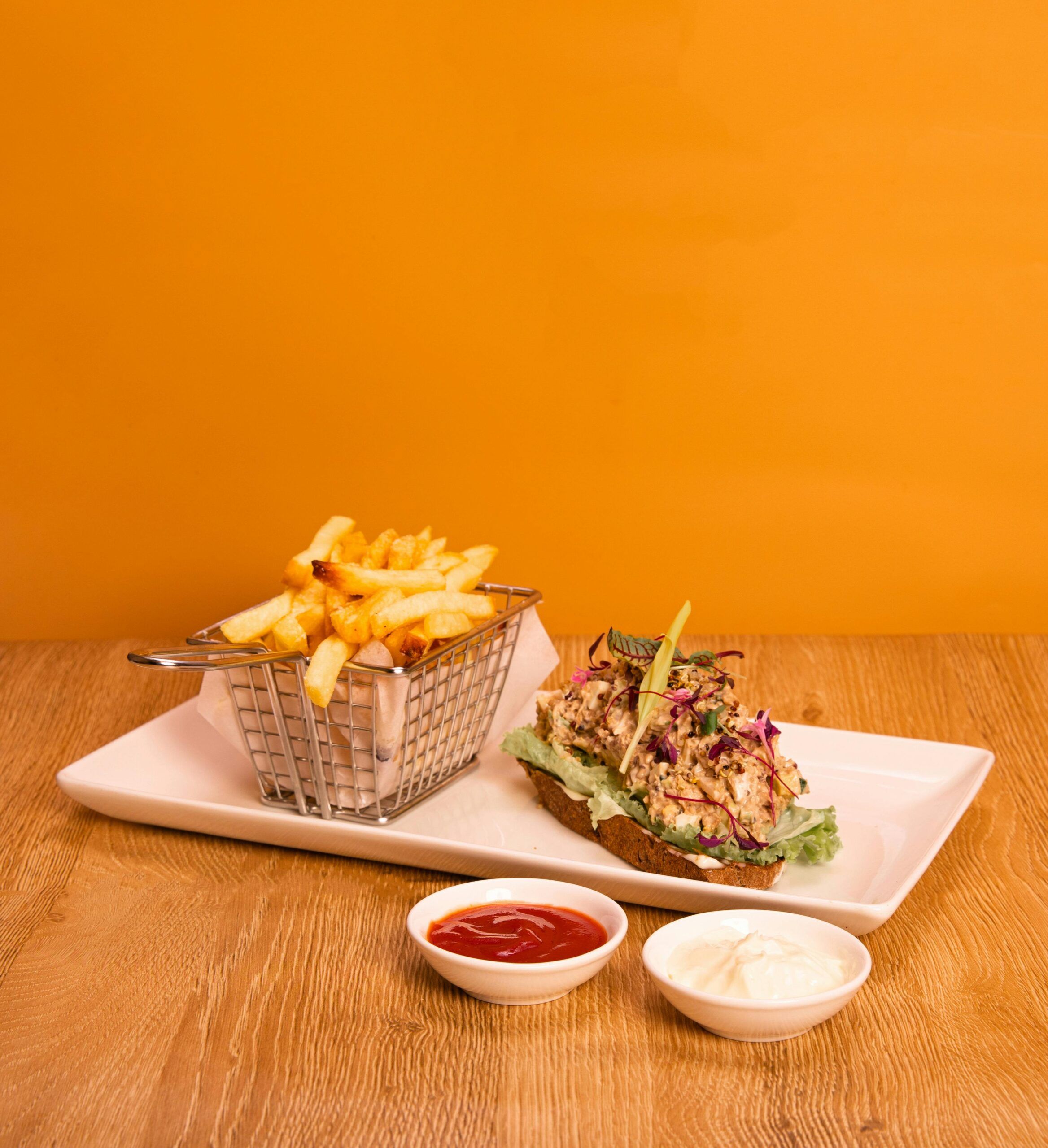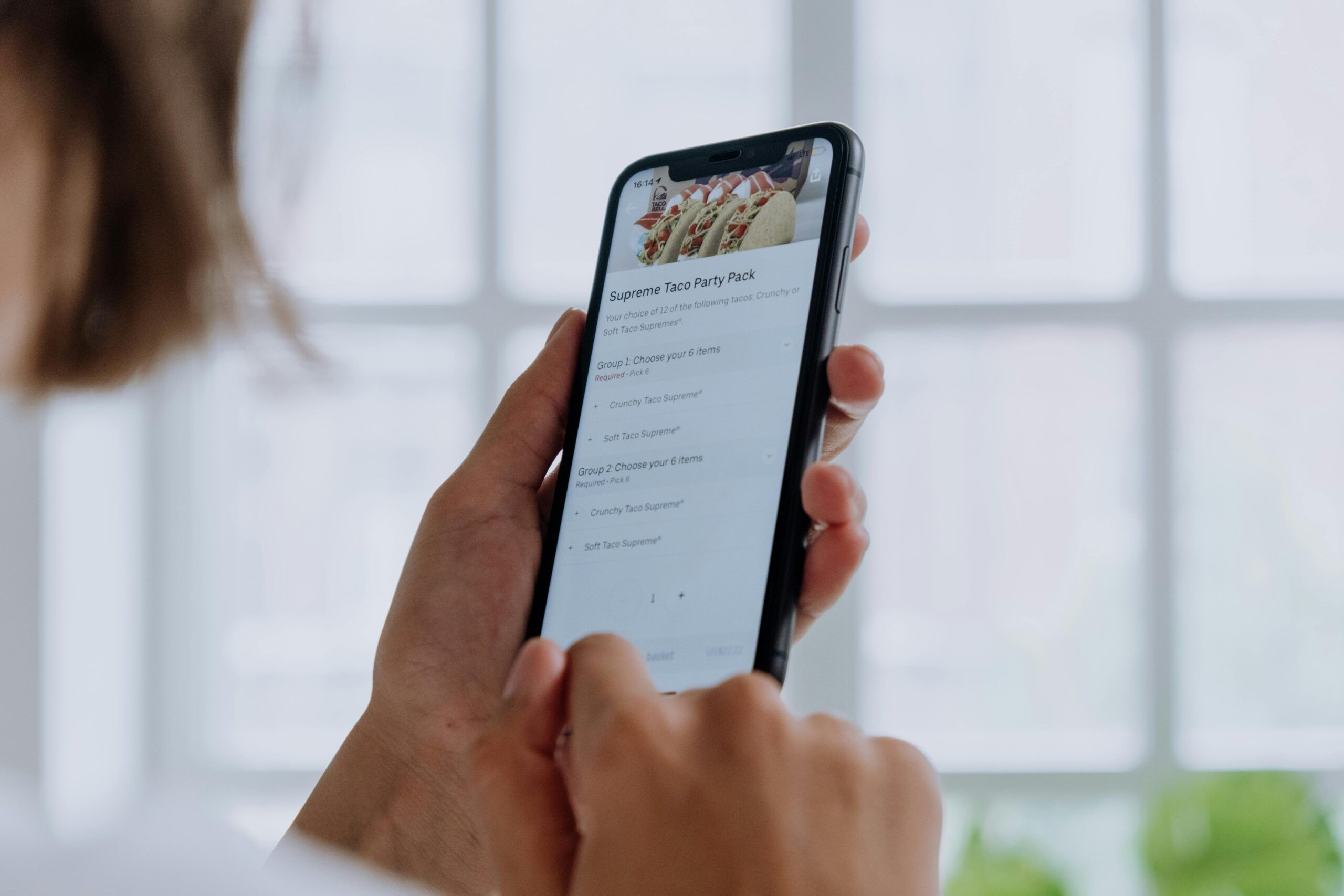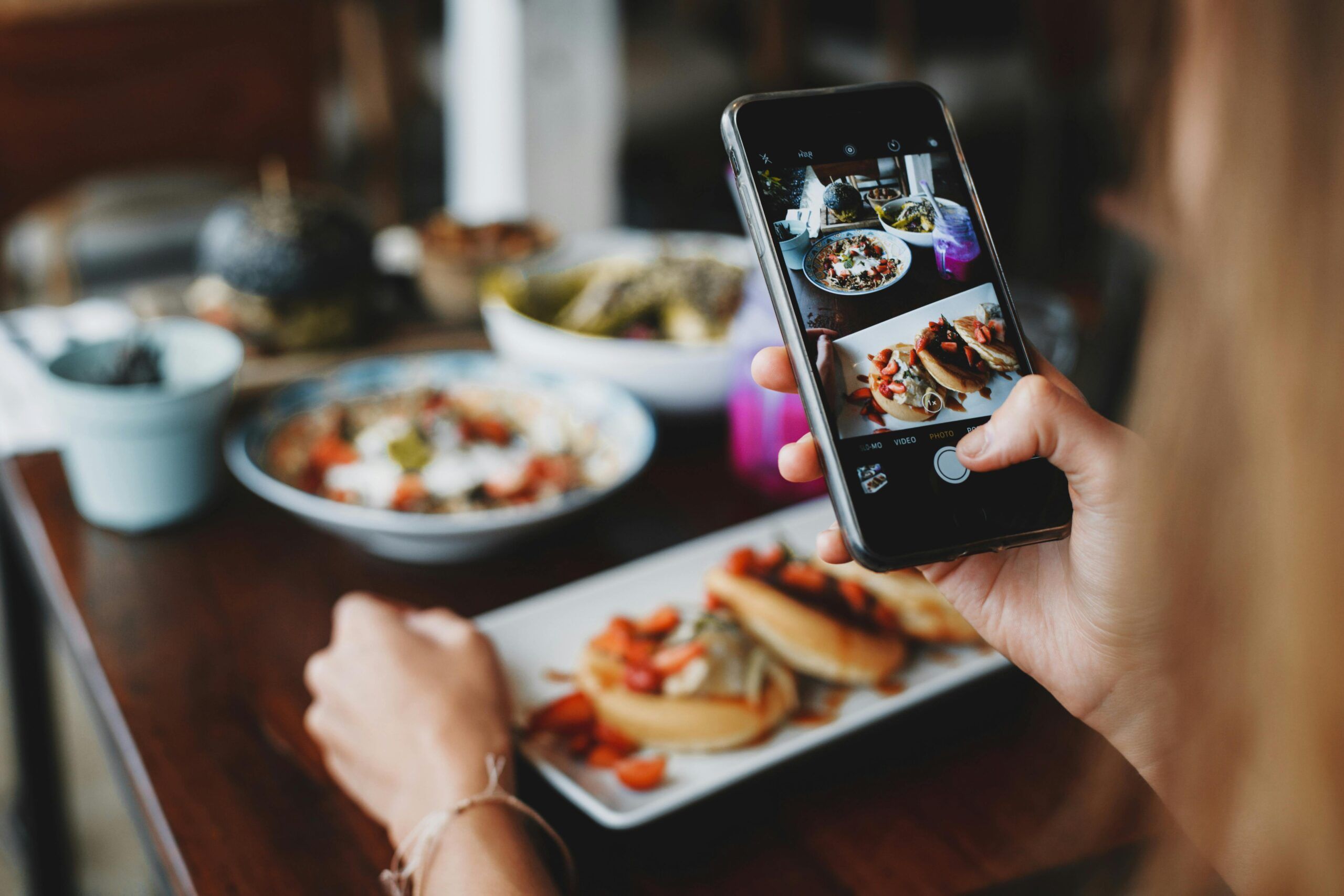- Why Managing Delivery Efficiency Is Different From Dine-In Service?
- 1. Organize Your Kitchen And Dispatch Area For Delivery First During Peak Hours
- 2. Set Smart Delivery Time Buffers On Third-Party Apps
- 3. Offer A “Delivery-Only Menu” During Peak Hours
- 4. Batch Orders For Drivers Based On Delivery Zones
- 5. Communicate Real-Time Delivery Expectations To Customers
- 6. Cross-Train Staff To Assist With Delivery Fulfillment
- 7. Analyze Peak Hour Delivery Data Weekly, Not Monthly
- Manage Peak Delivery Times With The Right Tools Behind You
- FAQ
During restaurant peak hours, it’s not just tables that get busy—your delivery queue does too. Orders pile up, drivers show up late, and mistakes can happen fast.
Managing peak hours restaurant delivery needs a different approach than regular service. Knowing when is lunch rush (12 PM–2 PM) and when is dinner rush (6 PM–9 PM) helps, but real success comes from preparation.
This article shares practical tips to help you handle delivery orders during the busiest times for restaurants without losing control.
Key Takeaways
- Managing peak hours restaurant delivery requires a different system than regular dine-in service.
- Organize your kitchen and dispatch area specifically for delivery during restaurant peak hours.
- Set realistic delivery time buffers on third-party apps to manage customer expectations.
- Simplify your delivery menu to improve kitchen speed and delivery accuracy.
- Batch nearby orders together to save drivers’ time and reduce delays.
- Communicate any expected delays early and clearly to customers.
- Cross-train your staff to help with delivery order packing and fulfillment during busy shifts.
- Review delivery performance data weekly to catch and fix problems before they grow.
Why Managing Delivery Efficiency Is Different From Dine-In Service?
Running a busy dining room is one thing. Managing peak hours restaurant delivery is a whole different challenge. Orders can stack up fast.
Drivers from different apps arrive at once. Customers expect quick, accurate service without seeing the kitchen chaos behind the scenes.
Unlike dine-in service, you don’t have extra time to fix mistakes. A wrong item or a delayed order often leads straight to a bad review.
It’s important to know what the busiest times for restaurants are and why they matter:
- When is lunch rush?
➔ Typically between 12 PM and 2 PM — office workers, students, and people on quick lunch breaks drive demand. An average American spends approximately $ 2,750 annually on lunch deliveries. - When is dinner rush?
➔ Usually from 6 PM to 9 PM — families, couples, and after-work orders increase sharply. - Other peak periods:
➔ Fridays, weekends, and holidays often bring bigger delivery surges.
➔ Weather events (like rain or cold) push more people to order delivery instead of dining out.
Understanding restaurant peak hours helps you prepare better staffing, kitchen workflows, and order management strategies. Customers expect fast, reliable service during these restaurant busy times, whether they’re ordering a quick lunch or family dinner.
That’s why having a plan for delivery during peak times isn’t optional. It’s the difference between growing your online orders and risking bad reviews and canceled orders.
Next, let’s walk through 7 real-world tips to help you manage delivery orders efficiently during the busiest times of the day.
1. Organize Your Kitchen And Dispatch Area For Delivery First During Peak Hours
When peak hours restaurant delivery hits, a messy or disorganized prep area can slow everything down. If your staff is running between dine-in orders and delivery tickets, delays are almost guaranteed.
Setting up a separate online ordering management system for delivery during restaurant busy times can make a huge difference.
Here’s what to focus on:
- Create a dedicated delivery prep station.
➔ Set aside space where only delivery orders are packed and checked. - Pre-stage packaging supplies.
➔ Bags, utensils, stickers, and containers should be stocked and easy to grab. - Prioritize delivery tickets.
➔ Use a simple color-coding system or a kitchen display screen to highlight delivery orders during the busiest times for restaurants. - Designate a clear pickup area for drivers.
➔ Avoid crowding the front counter or dining area. Mark it clearly so drivers know exactly where to go.
By organizing your kitchen and dispatch station ahead of restaurant peak hours, you can cut minutes off each order and handle higher volumes without chaos.
💡 Tip: Orders.co makes it easier to view and manage delivery tickets from multiple apps on one device, so your team can focus on fast and accurate hand-offs.
Want to see how it works? We’ll show you how to manage delivery orders faster with fewer errors—even during your busiest rush times.
Schedule a free demo here.
2. Set Smart Delivery Time Buffers on Third-Party Apps
During peak hours restaurant delivery, even the best kitchens can fall behind. Drivers can get stuck in traffic. Multiple orders can hit the same platform at once.
If your estimated delivery times aren’t realistic, you risk disappointing customers and hurting your ratings.
One of the smartest moves you can make during restaurant peak hours is adjusting your delivery time settings slightly.
Here’s how to do it:
- Increase your quoted delivery time during lunch and dinner rushes.
➔ Add 5–10 minutes to your average estimate during the busiest times for restaurants. - Adjust based on order volume, not just time of day.
➔ If you see a surge in incoming orders, it’s better to tweak your times proactively. - Be consistent across platforms.
➔ Update settings on every delivery app you use (Uber Eats, DoorDash, Grubhub, etc.).
This small adjustment protects your kitchen from getting overloaded and sets more realistic expectations with customers during restaurant busy times. Most customers are willing to wait a little longer if they know upfront.
Also, read:
- 11 Advantages of Online Ordering For Your Restaurant
- How To Increase Restaurant Delivery Sales With Online Ordering
- How To Set Up Your Online Restaurant Delivery System?
- Guide To Setting Up A Restaurant Ordering Website For Local Businesses
- How To Optimize Your Restaurant Order Management & Boost Online Orders
2. Set Smart Delivery Time Buffers On Third-Party Apps
During peak hours restaurant delivery, even the best kitchens can fall behind. Drivers can get stuck in traffic. Multiple orders can hit the same platform at once. If your estimated delivery times aren’t realistic, you risk disappointing customers and hurting your ratings.
One of the smartest moves you can make during restaurant peak hours is adjusting your delivery time settings slightly.
Here’s how to do it:
This small adjustment protects your kitchen from getting overloaded and sets more realistic expectations with customers during restaurant busy times. Most customers are willing to wait a little longer if they know upfront.
💡 Tip: With Orders.co, you can manage timing settings for all your delivery platforms from one dashboard—saving you valuable time during the rush.
3. Offer A “Delivery-Only Menu” During Peak Hours
Source: DoorDash
One of the fastest ways to speed up peak hours restaurant delivery is by simplifying what you’re offering during the rush.
A full menu is great for dine-in, but during restaurant peak hours, it can slow down the kitchen and create longer ticket times for delivery orders.
Offering a smaller “delivery-only menu” makes it easier to prepare meals quickly and consistently.
Here’s how to make it work:
- Pick your fastest, most popular dishes.
➔ Focus on meals that are quick to prepare, easy to package, and travel well. - Keep it simple.
➔ Reduce customizations, complicated modifiers, or dishes with long cook times. - Communicate clearly.
➔ Update your menu listings on all delivery apps during the busiest times for restaurants.
Customers appreciate faster delivery times over massive choices during restaurant busy times. A streamlined menu helps you hit their expectations without overwhelming your kitchen.
💡 Tip: With Orders.co’s Menu Management tool, you can create and update delivery-only menus across multiple platforms in minutes—perfect for adjusting quickly during lunch and dinner rushes.
4. Batch Orders For Drivers Based On Delivery Zones
During peak hours restaurant delivery, every minute counts. If drivers are making long trips for single small orders, it wastes time, adds pressure, and delays other deliveries.
Batching orders—grouping nearby deliveries together—is one of the smartest ways to handle restaurant busy times more efficiently.
Here’s how to make batching work:
- Group orders by location.
➔ Use your POS or delivery management system to match orders going to the same area. - Set smart timing windows.
➔ Allow a short 5–10 minute buffer for grouping nearby orders without making customers wait too long. - Communicate with drivers clearly.
➔ Assign two or three deliveries at once whenever routes allow it, especially during the busiest times for restaurants.
Batching improves driver efficiency, cuts delivery costs, and reduces kitchen congestion. It’s a simple way to improve restaurant efficiency during peak periods.
5. Communicate Real-Time Delivery Expectations To Customers
No matter how well you plan, there will be times during peak hours restaurant delivery when delays happen. The best way to keep customers happy? Tell them early and clearly.
Customers are more forgiving when they know what to expect, especially during restaurant busy times like the lunch rush or dinner rush.
Here’s how to manage communication better:
- Use automatic order status updates.
➔ Send real-time SMS updates or app notifications when orders are delayed. - Post peak-hour notices on your ordering platforms.
➔ A simple banner like, “Due to high demand during restaurant peak hours, delivery may take slightly longer. Thank you for your patience!” sets the right expectations. - Train your staff answering phones.
➔ Make sure they know to explain wait times clearly and calmly when customers call in.
Good communication reduces complaints, bad reviews, and cancellations—even when you’re running behind during the busiest times for restaurants.
6. Cross-Train Staff To Assist With Delivery Fulfillment
When peak hours restaurant delivery gets hectic, having flexible staff can make or break your operations. If your team can jump in and help wherever needed, you’ll handle the rush faster and with fewer mistakes.
Cross-training isn’t just for big restaurants. It’s a simple, smart move for any business that faces high volume during restaurant peak hours.
Here’s how to do it:
- Train front-of-house staff to pack delivery orders.
➔ Hostesses, servers, even managers can help bag orders, double-check items, and hand off to drivers. - Teach kitchen staff basic dispatch roles.
➔ When the kitchen is slow, cooks can help organize outgoing deliveries. - Run short training refreshers before the busiest times for restaurants.
➔ A 10-minute team meeting before the lunch rush or dinner rush keeps everyone sharp.
Cross-training improves teamwork, speeds up fulfillment, and cuts down on mistakes when it matters most.
7. Analyze Peak Hour Delivery Data Weekly, Not Monthly
If you only look at delivery performance once a month, you’re reacting too late. During peak hours restaurant delivery, small problems—like slow ticket times or missed deliveries—can quickly snowball.
Checking your delivery data every week gives you real insights while you still have time to fix issues.
Focus on key metrics like:
- Average delivery times during restaurant peak hours
- Order volume during the lunch rush and dinner rush
- Driver return times and wait times
- Menu items that cause slowdowns during the busiest times for restaurants
With weekly data, you can spot trends early, adjust staffing, tweak your “delivery-only” menu, or even reassign delivery zones before the next rush.
💡 Tip: Orders.co’s reporting tools let you track delivery performance daily or weekly, so you can adjust your operations and improve restaurant efficiency without guessing.
Schedule a free demo to see how real-time insights can help you stay on top of delivery operations—before issues turn into bad reviews.
Manage Peak Delivery Times With The Right Tools Behind You
Handling peak hours restaurant delivery isn’t about working harder—it’s about preparing smarter.
When you set up the right systems, train your team, and use tools designed for delivery success, the busiest times become growth opportunities instead of headaches.
At Orders.co, we help restaurants like yours take control of delivery operations, reduce chaos during rush periods, and deliver a better customer experience—even when order volume peaks.
Here’s how we support you during the busiest times for restaurants:
Restaurant Online Orders Management
Bring all your online orders—from your website and third-party apps—into one simple restaurants online orders management system dashboard.
No more switching between multiple tablets during restaurant peak hours, which cuts down mistakes and keeps your team focused on fast, accurate service.
Local Business Optimization
Keep your restaurant’s information updated across Google My Business, Yelp, and 80+ directories automatically with our local business optimization tool.
Better visibility drives more direct orders, helping you stay competitive even during the busiest times for restaurants when customers are searching for quick options nearby.
Menu Management
Update your menu pricing, photos, descriptions, and item availability across every delivery app you use—all from one place.
Our master menu management is the easiest way to stay flexible during sudden spikes like the lunch rush or dinner rush without slowing down your kitchen operations.
Custom Ordering Website
Launch a branded, commission-free ordering site that gives you full control over your customer experience.
Direct orders save you from paying high third-party delivery fees and help you grow loyal, repeat customers during and beyond peak hours restaurant delivery.
Guest Feedback Monitoring
Track guest reviews and satisfaction across all major platforms in real time with our guest feedback monitoring tool.
Quickly respond to negative feedback during restaurant busy times before it affects your reputation—and use positive trends to boost your marketing.
Integrations
Integrate seamlessly with 30+ POS systems, major delivery apps, and payment platforms.
With real-time syncing, your menus, orders, and reports stay updated automatically, so your staff can focus on handling peak-hour volume with fewer errors.
Reporting
Get real-time reports on your sales, delivery performance, and menu success across all your platforms.
Weekly or even daily reporting helps you quickly identify what’s working (and what’s slowing you down) to improve restaurant efficiency when it matters most.
Dispute Management
Automatically identify and respond to unfair chargebacks or missing order claims. Save time, recover lost revenue, and protect your profit margins during the most critical moments of peak hours restaurant delivery.
Schedule a free demo today and discover how Orders.co can help you simplify delivery operations, protect your margins, and serve customers better—even when your restaurant is at its busiest.
FAQ
1. How many extra staff should I schedule for peak hours restaurant delivery?
It depends on your average order volume. A good rule of thumb is to increase staffing by 20–30% during known peak periods like the lunch rush and dinner rush. Cross-training existing staff for delivery roles can often cover the gap without overhiring.
2. What’s a good average delivery time to aim for during restaurant busy times?
Most customers expect delivery within 30–45 minutes during peak hours. If you consistently exceed 45 minutes, it’s a sign to review your kitchen prep flow, dispatch process, or menu options during peak hours restaurant delivery.
3. Should I charge more for delivery during peak times?
Some restaurants implement modest surge pricing (e.g., an extra $1–$2 fee) during peak delivery times to offset labor and platform costs. However, be sure it’s clearly communicated upfront to avoid surprising customers.
4. How do I know if my delivery drivers are handling multiple orders efficiently?
Monitor driver wait times, return times, and customer delivery windows. If drivers consistently take longer than expected during peak hours, you may need better batching systems or smarter delivery zone management.
5. How far in advance should I prepare for restaurant peak hours?
Start prepping your kitchen, staff schedule, and delivery menus at least 2–3 hours before your busiest period (e.g., the lunch rush). Weekly reviews of sales data can also help predict when unexpected spikes might happen.



